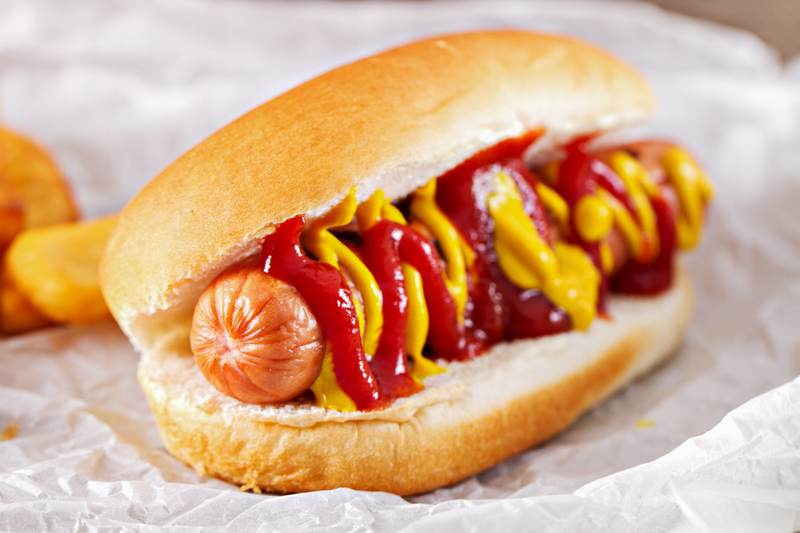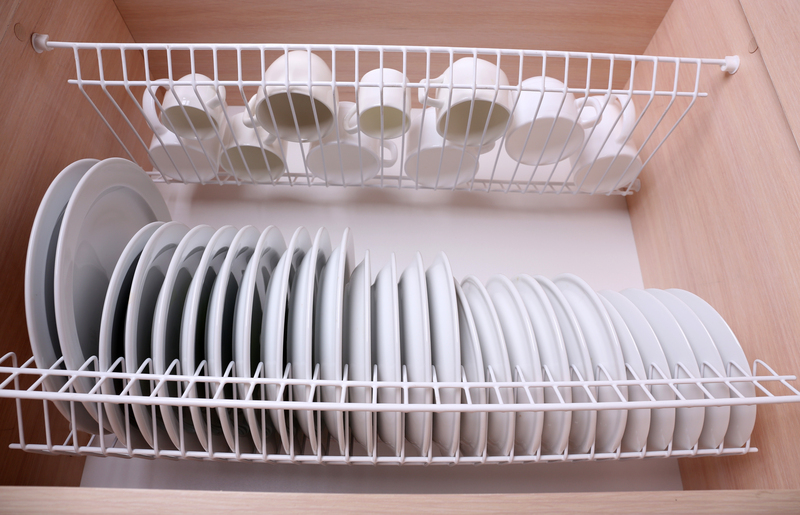
Effortless Methods to Clean Burnt-on Residue from Your Stovetop
If you love cooking at home, you know how quickly your stovetop can accumulate burnt-on residue and stubborn stains. Over time, these messes not only mar the beauty of your kitchen but can also affect your stove's performance. The good news is that achieving a sparkling, pristine stovetop isn't as tough as it seems. This comprehensive guide reveals a variety of easy and effective methods to clean burnt-on residue from your stovetop -- from quick fixes using pantry staples, to commercial cleaners, to proven maintenance tips for preventing stubborn buildup in the first place.
Table of Contents
- Understanding Burnt-on Residue on Stovetops
- Preparing to Clean Your Stovetop Safely
- Effortless Natural Methods for Removing Burnt-on Stovetop Messes
- Using Commercial Products for Tough Stovetop Residue
- Cleaning Different Types of Stovetops
- Prevention Tips to Keep Your Stovetop Spotless
- Frequently Asked Questions
- Final Thoughts
Understanding Burnt-on Residue on Stovetops
Before diving into simple methods to clean burnt-on residue from your stovetop, it helps to understand what you're up against.
- Burnt-on residue is typically caused by oil splatters, food spills, and sugary liquids that get overheated and stick stubbornly to your stovetop surface.
- High heat causes these substances to carbonize, turning spills into a tough, blackened layer that regular wiping can't touch.
- Over time, this buildup can become even harder to remove and may damage stove finishes if not treated properly.
Whether you have a gas stove, electric coil, or glass-ceramic appliance, the following effortless methods will help you clean stuck-on grime without damaging the surface.
Preparing to Clean Your Stovetop Safely
Safety Precautions Before Tackling Burnt Residue
Effective cleaning starts with safety. Here are some essential steps to follow:
- Turn off your stovetop and ensure the burners or surface are completely cool.
- If you have a gas stove, disconnect the gas supply if necessary.
- Remove any trivets, burner caps, knobs, or coils to access all dirty areas.
- Gather your supplies: microfiber cloths, non-scratch sponges, a plastic scraper or old credit card, baking soda, vinegar, dish soap, and paper towels.
- Ventilate the kitchen, especially if you'll use commercial cleaners or strong-smelling solutions.
Being prepared ensures your cleaning routine stays safe and effective.
Effortless Natural Methods for Removing Burnt-on Stovetop Messes
Using Baking Soda and Vinegar: A Powerful Duo
One of the easiest ways to clean burnt food off your stovetop uses baking soda and vinegar. These two pantry staples work together to lift even the most stubborn burned-on stains.
- Sprinkle a thick layer of baking soda directly on the burnt areas.
- Pour or spray white vinegar over the baking soda. Let the foaming action work for 15-20 minutes.
- Wipe away the loosened residue using a damp microfiber cloth or sponge.
- Stubborn spots? Use a plastic scraper (never metal!) to gently lift off the residue.
- Rinse the area and buff with a clean, dry cloth for a streak-free finish.
Soap and Hot Water Soak: Gentle but Effective
For less severe spills or fresh stains, a simple soak can work wonders.
- Mix a few drops of dish soap into hot water.
- Soak a cloth in the solution and lay it over the burnt-on mess for 15-30 minutes.
- Wipe, and repeat if necessary. Use a sponge for extra scrubbing power.
Lemon and Salt: Nature's Deodorizer and Abrasive
- Lemon's acidity helps cut through grease, while the salt acts as a natural abrasive.
- Halve a lemon, sprinkle with salt, and use the cut side to scrub the residue gently.
- Wipe clean with a damp cloth and admire your shiny stovetop!
Hydrogen Peroxide and Baking Soda Paste
If your stovetop has especially stubborn stains, try this method:
- Mix baking soda with a small amount of hydrogen peroxide to form a thick paste.
- Apply the paste to stubborn spots and let sit for 20-30 minutes.
- Scrub gently with a non-abrasive sponge, then wipe clean with a damp cloth.
Using Commercial Products for Tough Stovetop Residue
Best Stove Top Cleaners for Burnt-On Residue
Sometimes, natural solutions aren't enough for the most persistent grime. For these situations, specialized commercial stovetop cleaners can save the day.
- Weiman Cooktop Cleaner: Safe for glass and ceramic, cuts through tough, baked-on food easily.
- Bar Keepers Friend: Excellent for stainless steel and enamel, use as a paste and rinse thoroughly.
- Mr. Clean Magic Eraser: For small, extra-tough spots, use lightly -- never on delicate surfaces like glass.
Using a Razor Blade or Scraper
For glass stovetops only, a razor blade scraper can efficiently lift off burnt residue.
- Hold the blade at a 45-degree angle and gently scrape the residue.
- Never gouge or dig at the surface -- use a slow, smooth motion.
- Clean the area with a damp cloth and dry thoroughly.
Important: Avoid metal scrapers on coated or painted surfaces to prevent scratching!
Cleaning Different Types of Stovetops
How to Clean Gas Stovetop Burners & Grates
- Remove the burner grates and soak them in hot, soapy water for at least 30 minutes.
- Use a paste of baking soda and water to scrub any remaining residue.
- For metal caps, an old toothbrush works wonders to get into crevices.
- Wipe the cooktop itself with a gentle cleaner and dry before replacing the grates.
Cleaning Glass and Ceramic Stovetops
- Stick to non-abrasive cleaners and soft cloths to avoid scratching.
- Baking soda and vinegar work well for moderate messes; use a razor blade (carefully) for thicker residue.
- Wipe away any cleaner immediately with a damp microfiber towel to prevent streaks.
Restoring Stainless Steel Stovetops
- Apply a paste of baking soda and water, then buff gently in the direction of the grain.
- For shine, finish with a small amount of mineral or olive oil buffed with a paper towel.
- Never use steel wool pads as they can leave scratches.
Prevention Tips to Keep Your Stovetop Spotless
Stay Ahead of the Mess
The best way to keep burnt-on residue off your stovetop is to prevent it from building up in the first place!
- Wipe up spills immediately, before they have a chance to bake on.
- Use burner liners or drip pans to catch excess food and grease.
- Deep clean your stovetop weekly, even if it looks clean, to remove invisible greases.
- If you notice smoke or burned smells, check immediately to address spills before they become permanent stains.
- Consider using splatter screens when cooking with oil or frying.
With these simple habits, you can keep your stovetop shining without heavy scrubbing.
Frequently Asked Questions
How do I clean burnt-on food from an electric stove coil?
Remove the coil (if safe), then wipe with a damp cloth and a little dish soap. For stubborn residue, use baking soda paste--but make sure coils are fully dry before reinstalling.
Can I use vinegar on all stove surfaces?
Vinegar is generally safe for enamel, glass, and ceramic stovetops. Avoid vinegar on porous stone surfaces. Always spot-test first!
Is it safe to use a razor blade on my stovetop?
Only use a razor blade scraper on smooth glass-ceramic surfaces, and always be extremely gentle. Don't use blades on painted, coated, or stainless steel stovetops.
How often should I deep clean my stovetop?
Aim to thoroughly wipe your stovetop after each use, and perform a deep clean at least once a week or whenever you notice buildup.
Final Thoughts
Maintaining a spotless stovetop doesn't have to be hard work. By using these effortless techniques to remove burnt-on residue from your stovetop, you'll keep your kitchen hygienic and looking like new. Whether you prefer natural solutions or specialized cleaners, the key is regular upkeep and quick action when spills occur. Try these methods and see how easy it is to restore your stovetop's shine -- without harsh chemicals or back-breaking scrubbing!
Remember, a clean stove not only looks fantastic but also makes cooking a more enjoyable and healthier experience. For more kitchen cleaning tips and tricks, bookmark this guide and check back often for updates.



